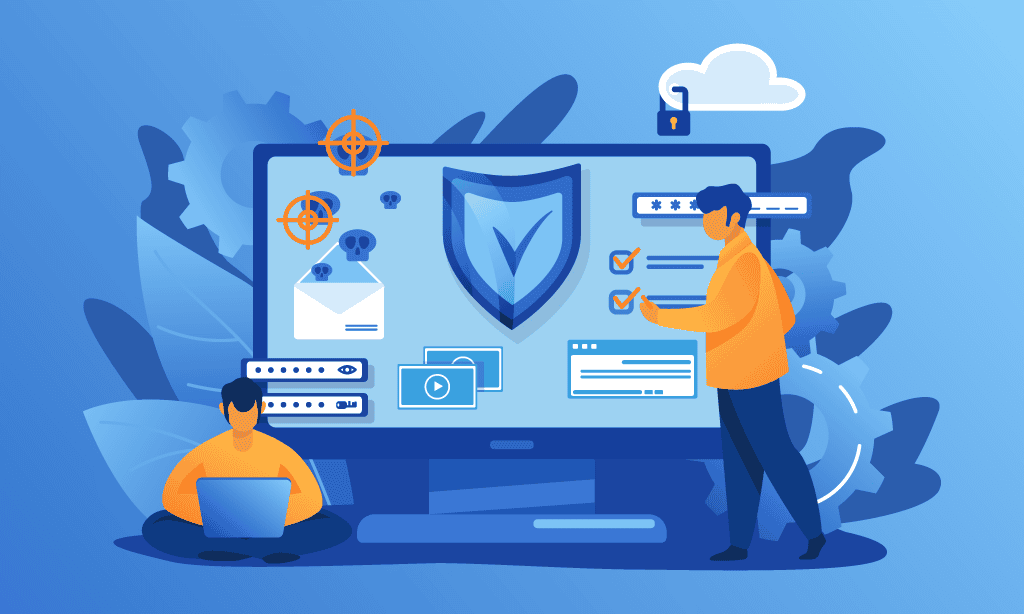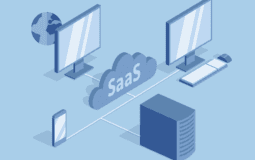SaaS applications come in various architectures designed to meet the needs of different customers.
While most SaaS tools use a multi-tenant architecture, single-tenant deployments have become increasingly popular. In this article, I’ll highlight why companies choose single-tenant solutions over multi-tenant solutions and vice versa.
When considering a SaaS application or service, you may have noticed that some providers offer single-tenant and multi-tenant versions of their software.
A tenant is a user who accesses the system and has specific permissions. The distinction between these terms can be confusing, but knowing what each means makes it easy to make an informed decision.
I’ve put together this guide to help you understand the difference between single-tenant vs. multi-tenant applications to help you choose which type of product fits your needs best.
I’ll cover what they are and how they differ from one another, as well as give examples of some popular products on both sides so that you know where they fit into today’s cloud ecosystem!
What is single-tenancy?
A single-tenant application uses a single server, while a multi-tenant application uses multiple servers.
Single-tenant applications are more secure because they don’t have any data from other companies. In addition, they don’t need any extra security measures because there’s no chance someone else will access or tamper with your data. Everything is stored exclusively on your machine(s).
What is multi-tenancy?
Multi-tenancy offers more scalability and security than single tenancy because each tenant can have its database and server resources. However, it also means you must pay for the entire infrastructure instead of just your portion.
Single Tenant vs. Multi-Tenant

You might have heard that single-tenant and multi-tenant terms describe SaaS applications. What does it mean?
It means that different customers of the same application run on separate databases so that they won’t be sharing data. If your customer base grows, you can spin up more instances or hosts for your customers to use in parallel. However, if you’re using a single-tenant system, this isn’t possible without creating a new solution from scratch.
In addition to being able to scale up as needed when your product gets more users (or more popular), multi-tenancy has some other advantages:
Single-tenant vs. Multi-tenant: Installation and Applications
Single-tenant software is installed on a server dedicated to one company or group (i.e., one customer).
In contrast, multi-tenant software is installed on a shared server and available for use by multiple customers—typically with some limitations on access based on company size or subscription level.
Single-tenant applications are typically more expensive than their multi-tenant counterparts because they require more time and resources to develop, test, support, and maintain.
However, some customers prefer the greater control that comes along with being able to have their private instance of the application installed in their data center rather than relying on an external service provider’s infrastructure to manage things like security updates or performance enhancements.
Single-tenant vs. Multi-tenant: Shared resources and Shared Servers
The entire application and its components are installed on a shared server in single-tenant architecture. This means that multiple tenants cannot use the same server simultaneously.
In multi-tenant architecture, each customer has their own virtualization space hosted on one or more servers.
The host server(s) contains all the applications and data for all customers using it. Because there are no limitations on resource usage by any one customer, both types of hosting offer similar performance levels in terms of speed and efficiency.
Single-tenant vs. Multi-tenant: Customized Software and Integrations
Single-tenant SaaS applications are often built for a single customer, and the software is customized for that specific organization.
In contrast, multi-tenant SaaS applications are built for multiple customers and are not personalized to any one of them.
This means that single-tenant solutions require more development effort than their multi-tenant counterparts because they must tailor to specific organizations—and there’s no guarantee that another company’s offering will meet your needs.
Single-tenant vs. Multi-tenant: Capacity Planning and Scalability
Capacity planning and scalability are essential when choosing a multi-tenant or single-tenant application. Both options can quickly scale up, but each requires different strategies.
Single-tenant applications are more accessible to scale due to their ability to change the number of instances depending on demand.
This is also possible via horizontal scaling, which involves adding more servers with the same configuration as existing ones (often in a similar data center).
You can add another server that runs the same software and connects through your load balancer’s VIP address when the load increases.
With this approach, you don’t need any new hardware or software licenses for your application or database; instead, all resources will be used efficiently because they’re already being used elsewhere on your network.
Multi-tenant applications offer advantages over single-tenant when it comes time for large amounts of growth or expansion that is unpredictable, like during seasonal spikes in activity such as Black Friday and Cyber Monday sales promotions.
During this period, there’s an increase in traffic from shoppers who have been waiting until the last minute before making purchases online instead of visiting brick-and-mortar stores like Walmart or Target during their busiest hours on Thanksgiving Day evening.
Single-tenant vs. Multi-tenant: Isolation and Security

If a single-tenant application is compromised, it’s only that tenant is only a problem-tenant application is compromised; however, the attacker now has access to all of your tenants’ data.
Single-tenant applications are more secure because they’re isolated from one another. For example: if an attacker gains access to one tenant on your platform and runs a SQL injection attack—which can be used to take over accounts—that user will only have access to the specific data belonging to that single tenant.
Single-tenant vs. Multi-tenant: Data Privacy and Compliance
This is an essential consideration for many businesses, particularly those that operate in highly regulated industries. In addition, single tenancy SaaS applications are more secure and compliant than multi-tenant SaaS applications. They’re also better for data privacy because an administrator controls who can access each tenant’s data and how much they can see.
They also make it easier to meet compliance requirements like HIPAA (Health Insurance Portability and Accountability Act) or PCI DSS (Payment Card Industry Data Security Standard).
Single-tenant vs. Multi-tenant: Pricing and Costs
When it comes to pricing and costs, there are some significant differences between the single-tenant and multi-tenant options. A few key points to consider:
- Single-tenant software can be significantly cheaper than multi-tenant. For example, a single-tenant solution may cost up to 40% less than its multi-tenant counterpart.
- This is because you don’t have any additional costs associated with maintaining data separation (which is necessary for a multi-tenant model).
Conclusion – Which One is Better?
Now that you know the differences between single-tenant and multi-tenant SaaS applications, it’s time to decide which solution is best for your company.
Single-tenant SaaS applications are great for companies looking for more security, customization options, and scalability.
If you want to be able to change or customize your application as needed without having to worry about what other users are doing with it in the meantime, then a single-tenant solution may be right for you.
By comparison, multi-tenant solutions cost less but can’t offer as much flexibility because they’re built on top of a shared code base that must simultaneously support all of the different uses.
That being said, if budget is an issue or if there isn’t much need for customization or advanced features such as analytics tools (which tend not to be available in this type of product), then a multi-tenant option might suit your needs better than the pricier alternative above.
Multi-tenancy may be the cheaper option, but it is essential to consider the differences between the two to ensure your business gets exactly what it needs.
At the end of the day, both options are perfectly valid, and which one you choose really depends on what your company needs most out of its software.
I hope that this article has helped show you some of those differences so that you can make a well-informed decision about which choice is right for you.



